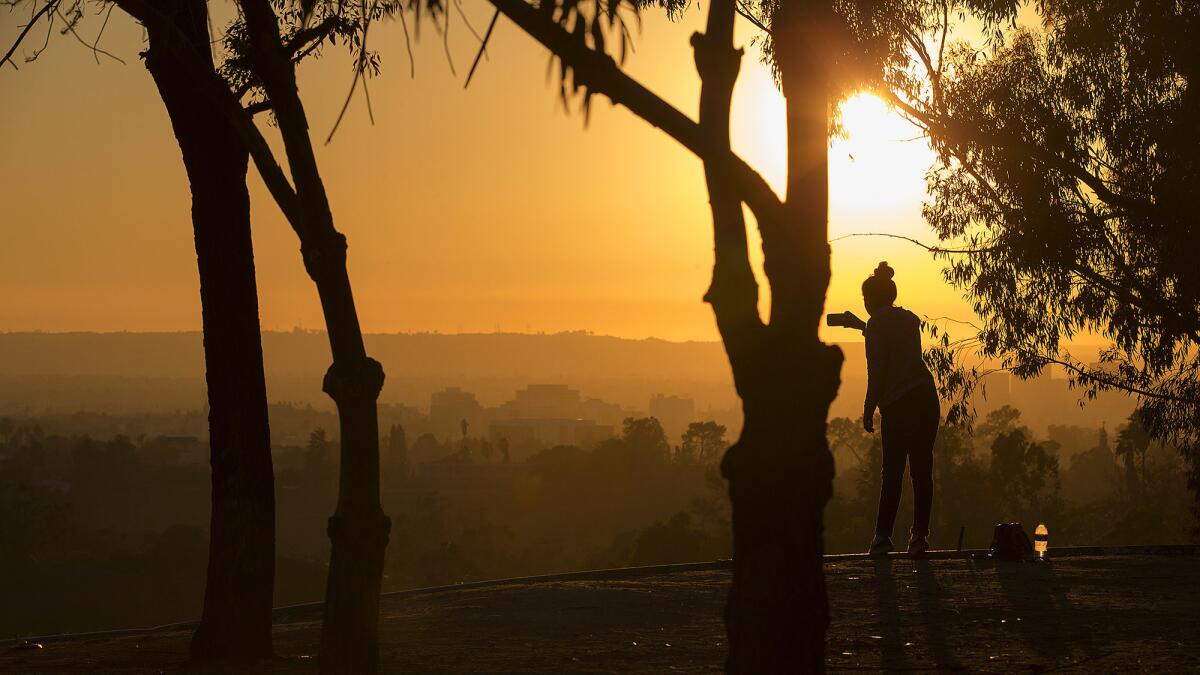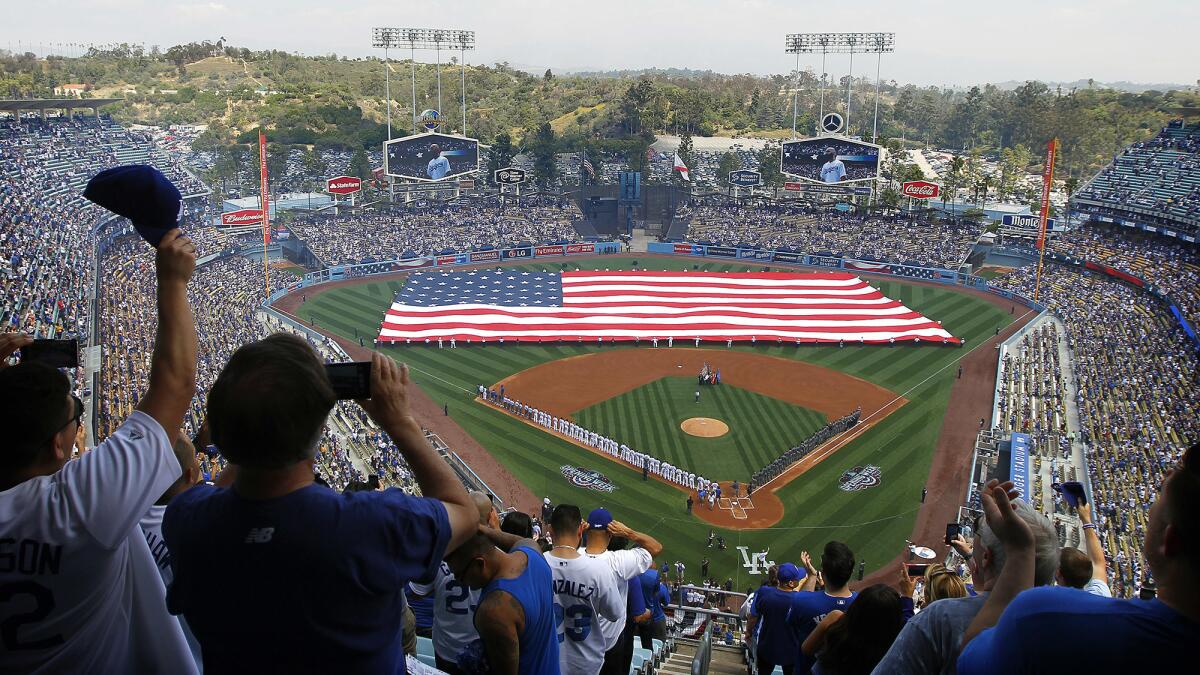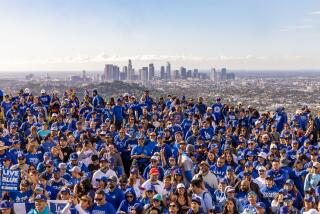Neighborhood Spotlight: Elysian Park is part of the infield but plays with a laid-back style

Elysian Park sits on and around a rocky promontory near the confluence of the Los Angeles River and Arroyo Seco, a vantage point that offers commanding views of downtown and the Eastside.
Those views, along with the difficulty in developing the rugged canyons and ravines that criss-cross the hill, led the city to establish a park there in 1886, making it the oldest municipal park in Los Angeles.
It wasn’t much to look at in the beginning. Nearly every tree had been stripped from the land by the time of the park’s founding, carted away for lumber or fireweed. The denuded hills offered no shade and precious little scenic beauty.
So the city undertook a program of reforestation of the park’s 604 acres, planting more than 100,000 trees over the course of six years. An arboretum was also established on 10 acres in the park, and although it was soon supplanted in the public’s imagination by the larger county arboretum in the San Gabriel Valley, it still exists.
Despite the area’s reputation as difficult to develop, people began to move into the portions of the hilly terrain that the park did not cover. In and around a large valley in the hills — which was named Chavez Ravine after the former city councilman who was the original owner of much of the park’s land — three communities flourished: Bishop, La Loma and Palo Verde.
Residents were primarily Mexican American Angelenos who lived an almost rural lifestyle in this isolated corner of the city. Their neighborhood pride ran deep, and the communities showed their organizing power in 1926, when they successfully lobbied for the end of blasting operations at the nearby Los Angeles Brick Works.
In the 1950s, the city began to evict the residents of the Chavez Ravine communities to make way for the planned Elysian Park Heights housing project. Their homes were demolished and their neighborhoods bulldozed, and close-knit families were scattered across L.A.
Although the city had promised residents that they would be able to move back to live in the new project, it was never built, having run into a buzz saw of opposition from red-baiters and anti-communists.
By the time the Brooklyn Dodgers relocated to Los Angeles in 1958, the land was nearly vacant, and the team identified the ravine, with its proximity to downtown and two major freeways, as the preferred location for their new stadium. The last of the old neighborhood’s residents were evicted to make way for Dodger Stadium in 1959.

Neighborhood highlights
Explore and discover: From Radio Hill to the Barlow Respiratory Hospital, Elysian Park is full of hidden history and stunning vistas.
Go, Dodgers: Its controversial beginnings notwithstanding, there’s no question there are few better places to see a baseball game than Dodger Stadium.
Laid-back lifestyle: The slower pace of life in old Elysian Park is preserved in such tucked-away neighborhoods as Solano Canyon, which dates back to 1866.
Neighborhood challenges
The price of popularity: Traffic from events at the stadium often clogs the streets of Elysian Park, and the picnic areas and trails keep a steady stream of cars coming and going the rest of the time.
Expert insight
Rob Kallick, a real estate agent with Sotheby’s International Realty, said Elysian Park residents can enjoy breathtaking views, trails and a sense of being away from it all despite the neighborhood’s proximity to downtown.
“It’s the best of both worlds,” he said. “It feels private, remote and rural.”
He said there is also a nice mix of midcentury homes and properties built in the last 10 to 15 years but noted that inventory levels have been low.
“There is always a very small selection of homes in the area,” Kallick said.

Market snapshot
In the 90026 ZIP Code, based on 29 sales, the median sales price for single-family homes in May was $895,000, according to CoreLogic. That was a 12% increase in price over the same month the previous year.
Report card
Within the boundaries of Elysian Park is Solano Avenue Elementary, which scored 923 out of 1,000 in the 2013 Academic Performance Index.
Nearby schools include Dorris Place Elementary and Logan Street Elementary, which scored 870 and 745, respectively. Florence Nightingale Middle had a score of 756; Ramon C. Cortines School of Visual and Performing Arts scored 737; and School for the Visual Arts and Humanities had a score of 685.
MORE FROM HOT PROPERTY
Modern home is the new kid on the walkstreet in Venice
Cypress Hill’s B-Real sells Northridge home for $1.3 million
WNBA star Candace Parker looks to court a buyer for Encino estate






